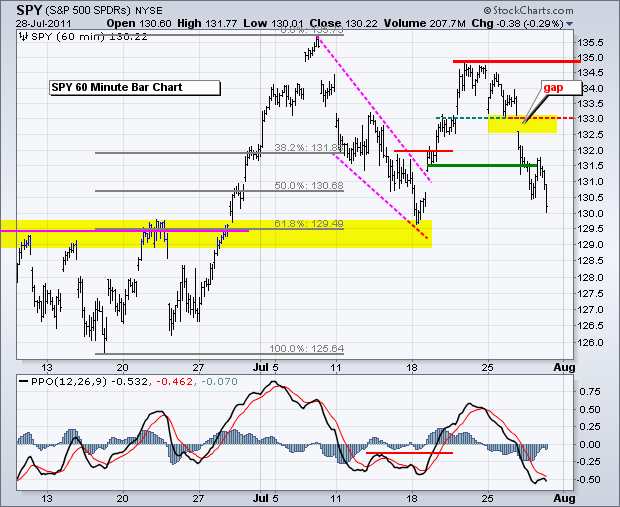Stocks remained under pressure as early strength gave way to afternoon weakness. QQQ finished with a small gain, but the other major index ETFs finished with small losses. With little real movement on Thursday, nothing has changed on the 60-minute chart. IWM was the first to break support and turn short-term bearish. SPY followed with a gap down and support break on Wednesday. QQQ declined to support on Wednesday and bounced on Thursday to affirm this support level. With SPY and IWM in bear mode and the short-term momentum oscillators confirming, the bulk of the short-term evidence remains bearish for stocks. There is, however, an elephant in the room – and it could be a bull elephant. The debt-ceiling debacle continues, but there will most likely be a solution on or before August 2nd. While I think the US debt issues are already priced into stocks and bonds, we could see a relief bounce in stocks if/when there is a break through.
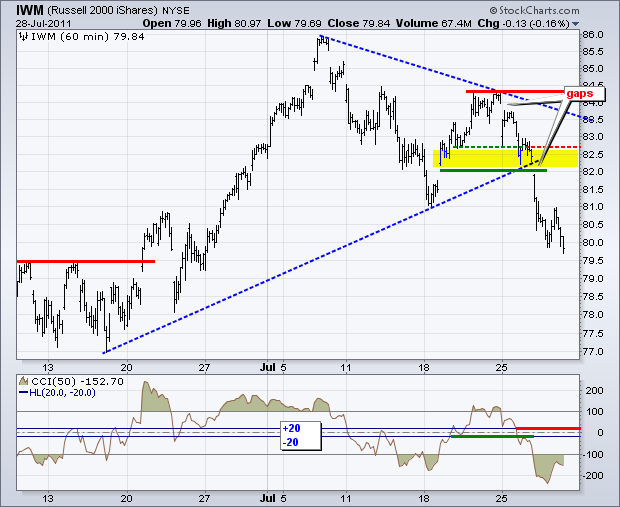

Bonds seem to be more concerned with the Euro than the debt-ceiling debacle. Bonds are also benefitting from recent weakness in the stock market and weak economic numbers (Durable Goods, Beige Book). Notice that the 20+ year Bond ETF (TLT) moved higher as the Euro moved lower the last two days. TLT is on the verge of a breakout in the 96.25 area. Weird as it may seem, US Treasuries and the Dollar still represent the flight-to-safety trade. Weakness in the Euro and stock market favors the risk-off trade and a flight to safety.
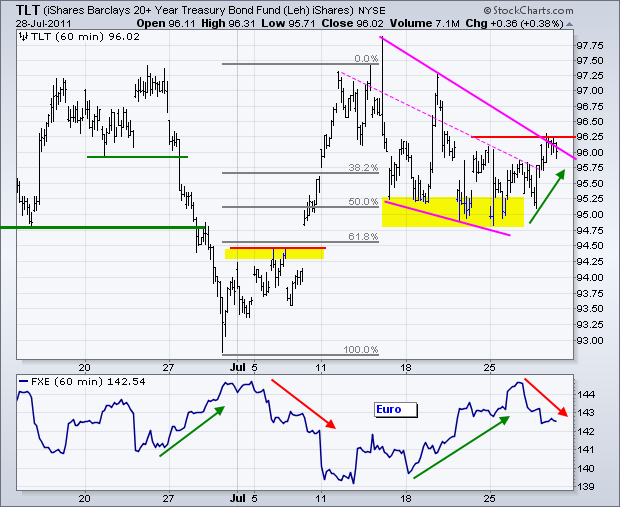
But how far can the Dollar advance? The US Dollar Fund (UUP) got an oversold bounce on Thursday, but resistance is nigh. Broken support levels combine to mark a resistance zone in the 21.20-21.35 area. The Dollar needs to break above this zone to reverse the current short-term downtrend. Such a breakout would likely coincide with a downside move in stocks and upside move in bonds.
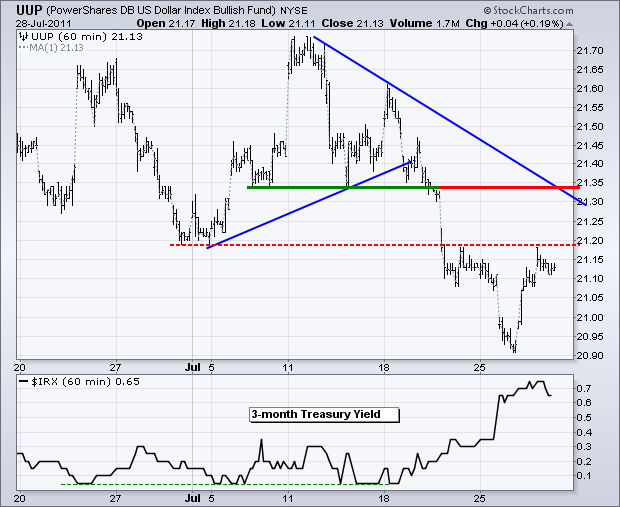
The 12-Month US Oil Fund (USL) broke the wedge trendline and Monday-Tuesday lows with a sharp decline on Wednesday. This break is holding so far, but we have yet to see a concerted move lower. I view this break as the early bear signal or top-pickers signal. A clear trend reversal would not occur until there is a break below the mid July lows.
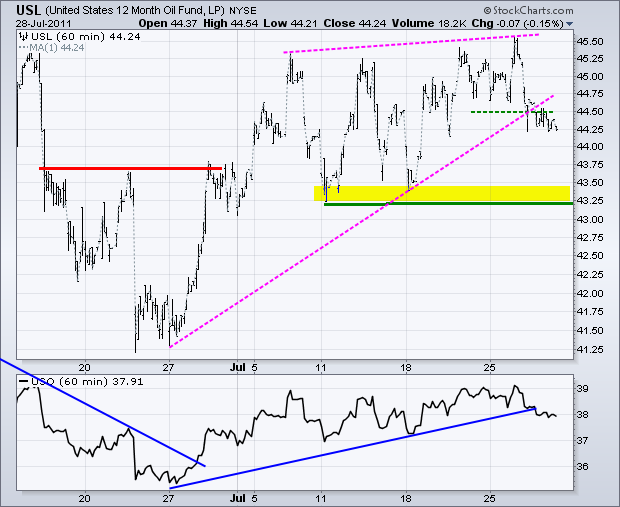
There is no change in the Gold SPDR (GLD). The ETF broke triangle resistance on Friday and continued higher on Monday. Broken resistance turns into first support. Last week's lows mark key support.
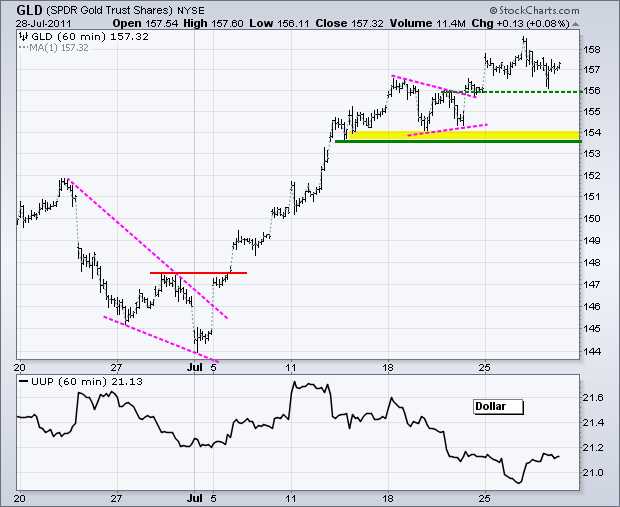
Key Economic Reports:
Fri - Jul 29 - 08:30 - GDP
Fri - Jul 29 - 09:45 - Chicago Purchasing Managers Index (PMI)
Fri - Jul 29 - 09:55 - Michigan Sentiment
Charts of Interest: Tuesday and Thursday in separate post.
This commentary and charts-of-interest are designed to stimulate thinking. This analysis is not a recommendation to buy, sell, hold or sell short any security (stock ETF or otherwise). We all need to think for ourselves when it comes to trading our own accounts. First, it is the only way to really learn. Second, we are the only ones responsible for our decisions. Think of these charts as food for further analysis. Before making a trade, it is important to have a plan. Plan the trade and trade the plan. Among other things, this includes setting a trigger level, a target area and a stop-loss level. It is also important to plan for three possible price movements: advance, decline or sideways. Have a plan for all three scenarios BEFORE making the trade. Consider possible holding times. And finally, look at overall market conditions and sector/industry performance.

